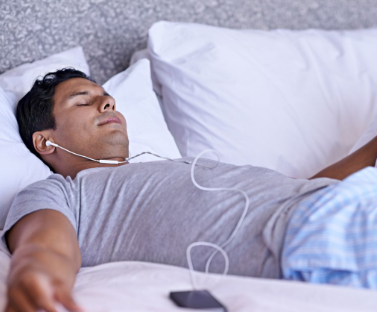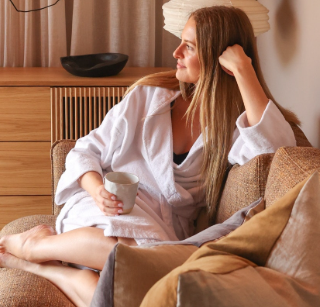After a long day, our bodies and minds often feel tight, restless, and full of lingering tension. Stress, prolonged sitting, or even mental overthinking can make it difficult to wind down and fall asleep peacefully. One of the most effective ways to ease into a restful night is by incorporating gentle stretching into your bedtime routine. Stretching before bed is not about intense workouts or pushing your body to its limits. Instead, it’s about slowing down, listening to your body, and creating a sense of calm that prepares you for restorative sleep.
Gentle stretching has both physical and mental benefits. Physically, stretching helps release tension in muscles, improves circulation, and can reduce stiffness, especially in areas like the neck, shoulders, back, and hips. Mentally, taking a few minutes to stretch encourages mindfulness, allowing you to focus on your body and your breath rather than the day’s worries. The simple act of moving slowly and intentionally signals to your nervous system that it’s time to relax, making it easier to transition into a peaceful sleep.
Creating a bedtime stretching routine doesn’t require any special equipment or extensive knowledge of yoga. A quiet space, comfortable clothing, and a few minutes of dedication are enough to begin. It’s best to choose stretches that feel soothing rather than strenuous. The goal is to release tension, improve flexibility gently, and calm the mind. Start by focusing on your breathing. Deep, slow breaths while stretching increase oxygen flow to muscles and encourage relaxation. Inhale deeply through the nose, hold for a moment, and exhale slowly through the mouth, imagining stress leaving your body with each breath. This mindful breathing pairs naturally with gentle movements, enhancing both physical and mental relaxation.
Begin your stretching routine with the neck and shoulders, areas where tension often accumulates from long hours at work, studying, or using devices. Slowly tilt your head to one side, feeling a light stretch along the opposite side of the neck. Hold for a few breaths, then switch sides. Gently roll your shoulders forward and backward, loosening tight muscles and promoting better posture. These small movements can have a surprisingly soothing effect, easing built-up tension that often contributes to headaches or restlessness at night.
Next, turn your attention to the spine and back. Many people carry stress in the lower back or upper back without realizing it. Seated or standing, gently reach your arms overhead and stretch upward, lengthening your spine. If lying on the floor is more comfortable, try a gentle twist by bringing one knee across the body while keeping your shoulders grounded. This encourages flexibility in the spine and helps release tension in the torso. Remember, the key is to move slowly and mindfully, avoiding any discomfort or pain. Each movement should feel natural, like your body is slowly unwinding from the day.
Stretching the hips and legs is equally important, especially for those who spend long periods sitting. Tight hip flexors can lead to discomfort and make it harder to relax. While lying on your back, gently hug one knee toward your chest, feeling a stretch in the hip and lower back. Switch legs and take a few moments to enjoy the gentle release of tension. Extending the legs and pointing or flexing your toes can help relax calf muscles and improve circulation, further supporting a sense of overall calm.
Incorporating gentle stretches for the arms and hands is also beneficial, particularly for those who work on computers or use their hands extensively during the day. Slowly extend each arm and stretch the fingers wide, then release. Wrist circles and gentle finger stretches can reduce stiffness and help your entire body feel lighter. Paying attention to these smaller areas reminds your mind and body that relaxation involves every part of you, not just the obvious areas of tension.
Consistency is key when using stretching as a tool for relaxation before bed. Even a five- to ten-minute routine each night can make a significant difference over time. Consider making it part of your broader evening routine, along with activities like dimming lights, turning off electronic devices, and engaging in quiet reading or meditation. Over time, your body will associate gentle stretching with the process of winding down, making it easier to transition from wakefulness to restful sleep.
It is important to approach bedtime stretching with patience and self-compassion. Your goal is not to perform perfect poses or achieve extreme flexibility. Instead, focus on how your body feels, what movements bring comfort, and how each stretch contributes to a sense of calm. Some nights, a single neck stretch may feel enough, while other nights you might enjoy a longer sequence. Listening to your body and adjusting accordingly ensures that stretching remains a pleasurable and restorative practice rather than a source of stress.
Another benefit of gentle stretching before bed is its ability to reduce stress and anxiety. When you move slowly and breathe deeply, your nervous system receives signals that it is safe to relax. This can lower heart rate, ease muscle tension, and calm the mind. By incorporating gentle movements into your bedtime routine, you are creating a positive feedback loop where relaxation leads to better sleep, and restful sleep contributes to reduced stress during the day. Over time, this simple habit can improve overall well-being and enhance your quality of life.
For those new to stretching, it may be helpful to use guided resources or follow simple routines available through reputable platforms. Videos or apps can provide instructions for gentle stretches suitable for bedtime. However, the most important aspect is to keep movements slow, controlled, and comfortable. Avoid overstretching or bouncing, as this can create tension rather than relieve it. Remember, the goal is calmness and comfort, not performance.
In conclusion, gentle stretching is a highly effective, accessible way to prepare the body and mind for sleep. By dedicating a few minutes each night to mindful movements and deep breathing, you can release tension, improve circulation, and cultivate a sense of inner peace. Creating a consistent bedtime stretching routine helps train the body to recognize the transition from daytime activity to nighttime rest. Over time, this practice can reduce restlessness, support better sleep quality, and leave you waking up feeling refreshed and light. Embracing gentle stretching before bed is not just a physical habit—it’s an act of self-care that nurtures both body and mind, guiding you toward calm, restful nights and brighter mornings.






